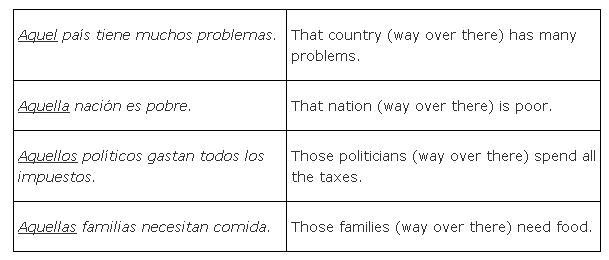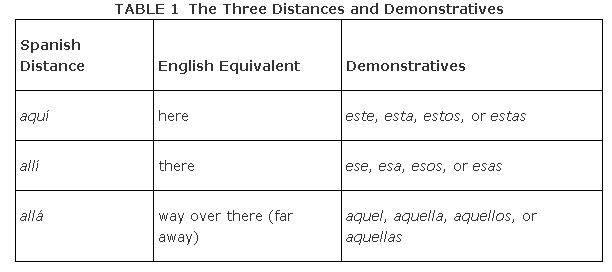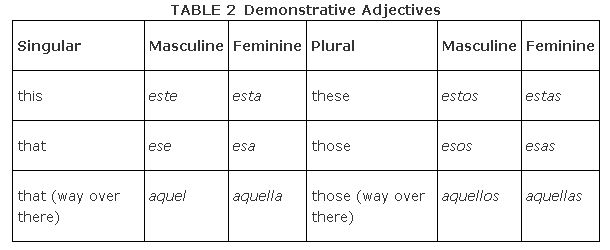Unlike the English language, which—as discussed earlier—only has two demonstrative distances, the Spanish language differentiates between three distances: “here,” “there,” and “far away.” If you want to indicate that a noun is “way over there,” use the singular demonstrative adjectives aquel (masculine) or aquella (feminine) or the plural demonstrative adjectives aquellos (masculine) or aquellas (feminine). Because English does not have three demonstrative distances, there is no English equivalent to these words; for this book's purposes, these words are translated as “that (noun) way over there” or “those (nouns) way over there.” The following sentences illustrate this concept.

To indicate the three different distances in the Spanish language, you must learn three important words. If you see one of these in a sentence, it is a good clue as to which demonstrative adjective is appropriate to use in the sentence. Table demonstrates which type of demonstrative adjective should be used with each distance word.

Table organizes all the demonstrative adjectives by gender and number. Consistently, the singular feminine forms and plural masculine and plural feminine forms of all the demonstrative adjectives have “normal” endings (‐a, ‐os, and ‐as). The singular masculine forms are the ones that break the pattern with este, ese, and aquel.

This is important to know because demonstrative pronouns have a form that looks like what you would expect for the singular masculine form of demonstrative adjectives. Also notice that demonstrative adjectives do not have any accent marks. If you see similar words with accents, they are demonstrative pronouns, which replace nouns rather than modify them.
|
|
|
|
|
|
|
|
|
|
|